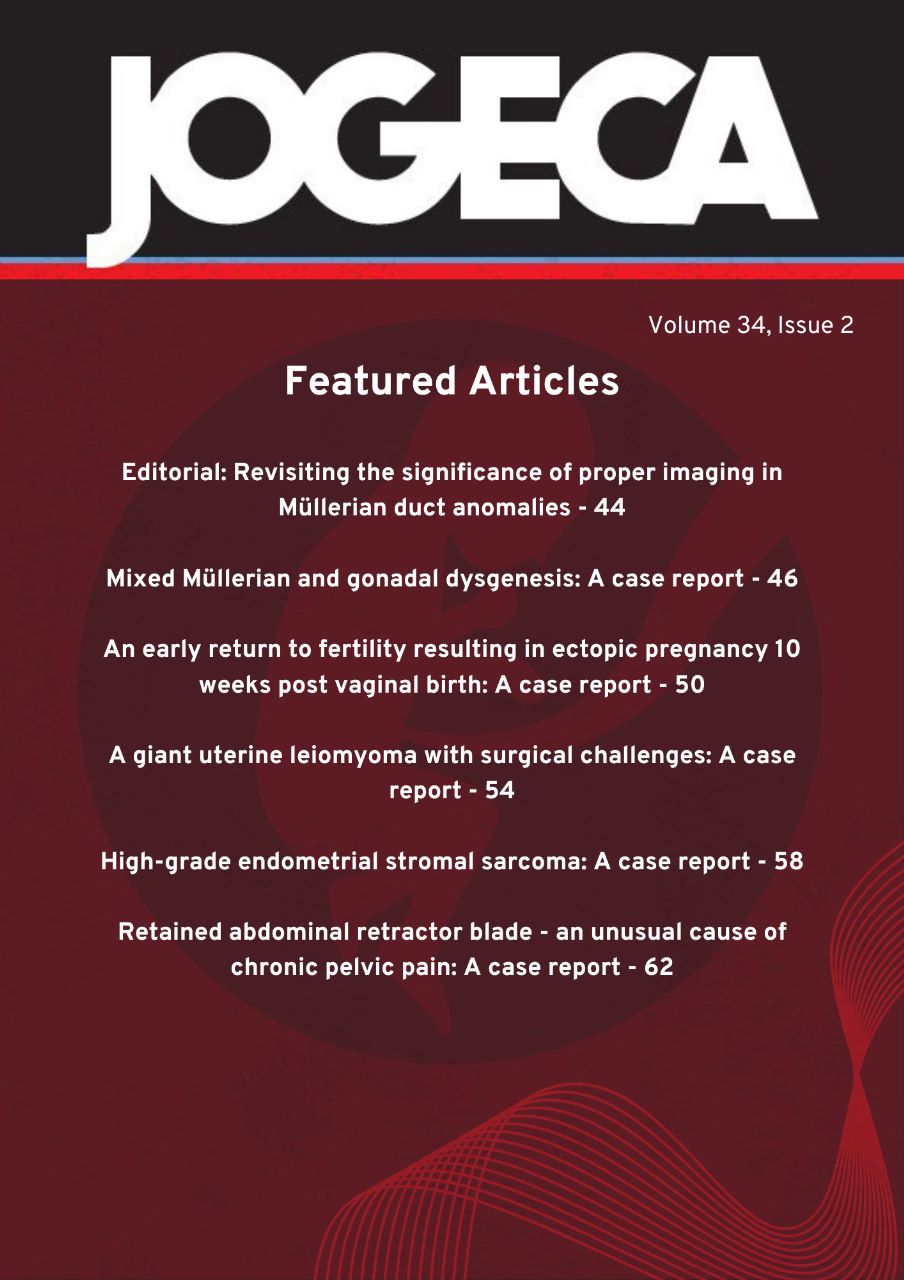Factors influencing access to preferred contraceptives among women of reproductive age in public primary healthcare facilities in Kajiado Central subcounty, Kenya
DOI:
https://doi.org/10.59692/jogeca.v34i3.73Keywords:
access, conraceptives, family planning, kajiado, kenyaAbstract
Background: Access, health communication, client, healthcare workers, and organizational factors are associated with contraceptive access and can be used as indicators to measure the effectiveness of health services and guarantee that services reach users.
Objective: To evaluate factors influencing access to preferred contraceptives among women of reproductive age in public healthcare facilities in Kajiado Central subcounty, Kenya.
Methods: A cross-sectional descriptive study design was employed. The study targeted 500 family planning clients visiting five public primary healthcare facilities in the Kajiado Central subcounty. A sample of 217 respondents was drawn using systematic sampling method. A structured questionnaire was used to collect data. Data were entered, and descriptive, bivariate, and binary logistic regression analyzes were performed using the statistical package for social sciences (SPSS) version 24.0 (IBM Corp., Armonk, NY, USA). The statistical significance was set at p˂0.05.
Results: A majority, 114 (58%) respondents, were aged 25-34 years, 169 (86%) were married, 87 (44%) had 3-4 children, and 93 (47%) had attained college education. Fifty percent (110) of the respondents were on short-acting reversible contraceptive methods, whereas 88 (45%) were on an injectable contraceptive (Depo-Provera). Client factors were associated with contraceptive access (p<0.05). Client factors (p<0.001, OR=12.655, 95% CI [4.701-34.067]), and organizational factors (p<0.05, OR=2.541, 95% CI [1.079-5.985]), had a significant relationship with access to contraceptives of preferred choice.
Conclusion: Client and organizational factors influenced access to preferred contraceptives among women of reproductive age in public primary healthcare facilities in the Kajiado Central subcounty.
Downloads
Published
How to Cite
Issue
Section
Categories
License
Copyright (c) 2022 The Authors.

This work is licensed under a Creative Commons Attribution 4.0 International License.




